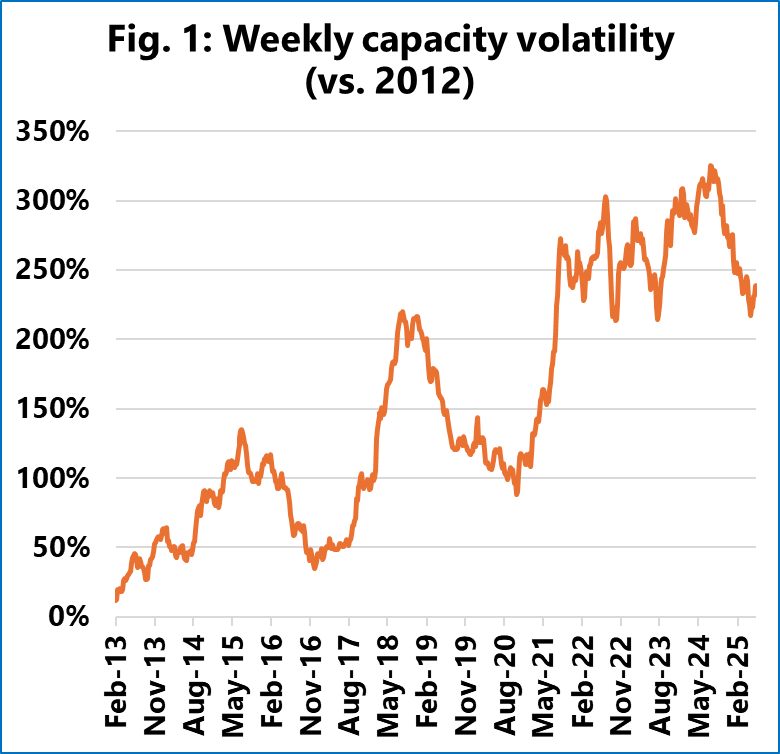A new analysis by leading maritime intelligence firm Sea-Intelligence (SI) reveals a dramatic and sustained increase in capacity volatility on the critical Asia to North American West Coast (NAWC) shipping trade lane. The study indicates that weekly capacity fluctuations have been consistently around 250% higher over the past three years compared to 2012, with some periods seeing volatility quadruple or reach 300% higher than 2012 levels.
This heightened volatility, driven by factors such as blank sailings, off-schedule vessel arrivals, and varying vessel sizes within the same service, creates significant challenges for shippers and directly impacts the predictability of spot rates.
Sea-Intelligence’s analysis, which measures week-on-week changes in absolute terms and utilizes a 52-week moving average to identify systemic shifts, highlights a disturbing trend. “For the past 13 years, the underlying driver for spot rate formation on Asia-NAWC has become progressively more unstable,” stated [Name and Title of Sea-Intelligence Spokesperson – You will need to fill this in]. “This capacity volatility translates directly into a much more volatile and unpredictable spot rate environment.”
Key Findings from the Sea-Intelligence Analysis:
- Persistent High Volatility: For the last three years, weekly capacity volatility on the Asia-NAWC trade has been approximately 250% higher than in 2012, frequently reaching up to 300% higher.
- Four-Fold Increase: Compared to 2012, capacity volatility on this crucial trade lane has nearly quadrupled.
- Systemic Instability: Even when adjusting data to reflect capacity volatility as a percentage of overall capacity, the escalating pattern remains consistent.
- Widespread Impact: The increase in volatility is not limited to extreme events. Sea-Intelligence’s analysis of both the 25th and 75th quartiles shows a rising trend for both, indicating that volatility is increasing even in traditionally more stable weeks. This demonstrates a pervasive instability in the overall supply/demand balance.
- Spot Rate Implications: The increased capacity volatility directly contributes to a less predictable and more unstable spot rate market on the Asia-NAWC trade lane.
The findings underscore a significant shift in the operational dynamics of one of the world’s busiest shipping routes, demanding increased attention from stakeholders aiming for stability in their supply chains.




